The 50 States Project is a series of candid conversations with interior designers across the country about how they’ve built their businesses. This week, Newark, Delaware–based designer Cheryl Umbles tells us how she makes an all-remote staff work, why she tries to close her office for the month of December and why she craves client feedback.
You came to design after a career in two other industries. When you look back, did you have any inkling that you might want a creative career?
I don’t think so. My mother and father were in their 40s and 50s when I was born, so I was a late baby. They were a totally different generation—a generation that said, “You’re going to go to college and major in something that’s going to make you money.” If I had told them that I wanted to study art, that just never would’ve worked.
What sparked your interest in interiors?
It was a happy accident—and totally unexpected. My first degree is in biochemistry, my second degree was in business marketing, and my third degree was in interior design. I had been working in corporate America as a marketing research specialist in the pharmaceutical industry when my company was sold. I got a very generous package, so I decided to take some time off, because I had been running full-tilt for three years straight and I just needed a break. I thought I’d just catch up on a few projects I wanted to do around the house, and then in a year I’d go back out there and start looking for a job.
A few months in, I went out to several showrooms in the city. When I got home, my husband said, “How was your day?” I said, “Well, I had the strangest experience.” I told him how I was in Calico Corners talking to the lady behind me in line about finding a fabric—she couldn’t find anything, and I just kind of looked around while I was in line and told her, “Oh, what’s that? It’ll work great with that gingham print that you already have.” And when I got to the cash register, the store manager asked, “Are you a designer?” When I said no, she said, “I overheard you talking to another customer and you sounded so knowledgeable.” She told me they were always looking for good people, and to let her know if I thought I might be interested. Then I go to Ethan Allen to look for some accessories for my home, and I have the same conversation with the salesperson there. And I can’t remember the third showroom I was in that day, but it was the same thing. I’m relating all of this to my husband, and he said, “Well, maybe they see something in you that you don’t.” It wasn’t something I was looking for; it was something that others had to bring to my attention.
That’s amazing. How did you act on it?
I decided to reach back out to Calico Corners, and I took a part-time job there—mainly just because I loved fabrics. That’s where I discovered that I had a knack for putting things together—I could pull together colors and patterns for people that they really liked. While I was there, I started getting more interested in the design industry. Before, I didn’t really think—I mean, I’d worked in the oil and gas field, and then in pharmaceuticals; I was a scientist with a marketing background. But that’s where I found that I could do this for people full-time.
Calico Corners had a home consultant position, and when it became available, I asked if I could be considered. The store manager said, “You know what? You try the position on, and we’ll try the position on you.” And it worked. I would go out to people’s homes and I would be promoting Calico’s products, but inevitably I would get questions like, “What should we do with this rug?” or “What should we do with this piece of artwork? That’s when it clicked: I realized that I really wanted to know what I was saying to people—I didn’t want to just give it my best guess. So I decided to take some design classes at Delaware College of Art and Design.
What was design school like, compared to your other degrees?
I was transfixed by the whole process. And I was very encouraged at that point, because I had an instructor who told me, “You are born with creative talent; you only go to design school to learn how to hone it.” I felt that this was something I could really do, so I enrolled in the program, which I finished in 2009. I’m a late bloomer.
That was a tough time for the design business, too.
I told my husband, “I’ve got this degree in design. If I don’t do this now, when am I going to do it?” I was 52 years old. And he said, “OK, I’m behind you 100 percent.” And you’re right, the economy was in a downturn, but that was almost a gift for me, because that really gave me time to learn about the industry.
It’s one thing to come out of school, hang up your shingle and say, “I’m an interior designer.” But I didn’t really know how to service clients, so I spent my time doing what I had done for years in my corporate life: I educated myself about the business of interior design. Design school teaches us how to be creative, about scale and balance, how to do lighting…
But not how to make money doing it.
Exactly. I was lucky that I had a business marketing background and that I had worked in corporate. I had that learning in me, but it was still a whole new adventure. At the beginning, I did not focus on how much money I made or if my phone was ringing or how much marketing I had to do, because when that right project came along, I wanted to have a little knowledge under my belt.
Where did you turn for insights?
I went to every market and trade show I could get into and I talked to other designers. I was lucky enough to meet Nile Johnson, an awesome interior designer who practices all over but is based in Pennsylvania. We realized right off the bat that we had a certain kindred [connection] and he was very open. That openness, it was definitely rare then to find someone that would sit down and have a candid conversation, because everybody was thinking you’re going to take something away from them.
In terms of prospective clients?
Yes. Interior design is a very intimate process—you’re talking about inviting a stranger in to design a space that you’re going to live in. To me, that’s very intimate. But everyone that I talk to is not my client: Sometimes the personalities may not click, or the comfort level may not come immediately. So thinking that sharing knowledge about how to do the business of interior design—where you source product, or the name of a contractor that you would recommend, or how you put together a proposal to get your clients to sign off—there’s nothing wrong with sharing that information. You’re not taking anything away from me.
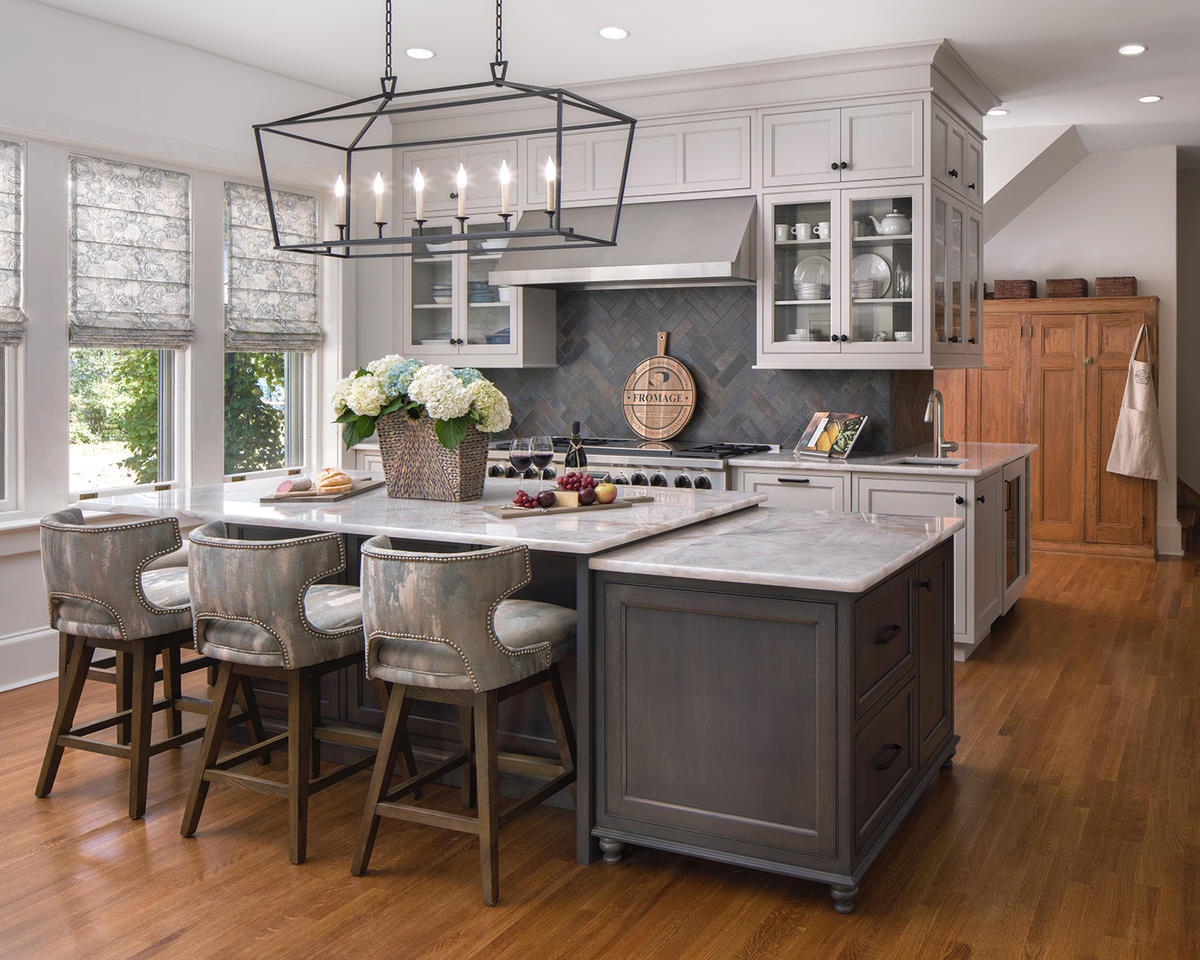
How did you find your first client?
I had the opportunity to try my skill set out on a few friends. A friend who had moved from Delaware to Georgia said, “Cheryl, can you come down and help us with this project?” She actually had no idea that I had hung up my shingle as an interior designer—she just knew I’d been in school—so the timing was perfect.
Did you charge those friends?
I did. That’s one of the things I knew. When I was in graduate school for business, I learned: You don’t give away your services for free, because then people don’t value them.
You were light years ahead of so many other people I talk to, then!
In that respect, yes. Was I charging my worth? Probably not. But I was charging something.
How do you decide what you say yes to today?
It’s a combination of the scope of the project, budget and the client’s energy. I’m very big on the initial energy that the client brings to the table, because I like clients to be involved in the process. That doesn’t mean I’m going to walk away from a project where the client says, “I don’t have time to be bothered.” But you know what? I have a project for a client who doesn’t have time to put any energy into a space that she’s going to live in, and it’s not fun working with her.
Ideally, what does that involvement and energy look like?
I love feedback. I love when they explain what doesn’t work for them, whether it’s in their existing space, or even if it’s something I’m doing. I like their excitement. A prospective client just reached out via my website, and in their response to our generic, “Hello and welcome to Cheryl Umbles Interior Design” message, they said: What I really want to do is give you the ideas that I have, and I want you to make them sing.
That’s really lovely.
That’s somebody who’s going to work with me. It lets me bring my brand of design and the design process to them, which, to say it very simply, is about functional beauty. I think it’s very easy to make a space beautiful. But if it’s not functional—if it doesn’t work for how a person or their family functions in everyday living—it’s just not good design.
I tell people, “My goal is to leave you with a space that you love to live in. Because at the end of the day, I go home to my house and I love it. I want to leave you with that same kind of space.” That’s the approach that I take. I don’t have a signature design style because all of these clients are different people. They have different lives, they function differently inside their homes, and they have different expectations, different definitions of beauty and different definitions of comfort. Their homes have to reflect that.
How many projects are you typically working on?
A full plate for us is seven to 10 projects—right now, we’re at seven, but one is in Texas. It’s very large and it’s new construction, so it feels like three projects.
What does your team look like these days?
We’re a small shop, which I love, but we are not at our ideal staffing. I’d love to be at five, but there are currently three of us: myself and two design assistants.
We are a remote team—one person is in Maryland and the other is in North Carolina. One spends the majority of her time doing our CAD work, some sourcing and design boards. The other is doing a lot of the sourcing and problem-solving, reaching out to vendors and getting bids. Right now, I am the only one in Delaware. We need another pair of legs here, because I am currently responsible for all of the customer interface. It’s great—I’m a very gregarious person—but it’s a lot. I really need to get someone on board in the next 60 days, because we have a waiting list for projects and we’re fast coming up on the time when two projects need to kick off.
When you have that local person on your team, what are you excited to hand off?
Following up with clients, following up if there has to be a site visit during the construction or renovation process, going to showrooms. Right now, if we need a sample from a local tile showroom, it’s me picking it up on the way back from Pilates or something like that.
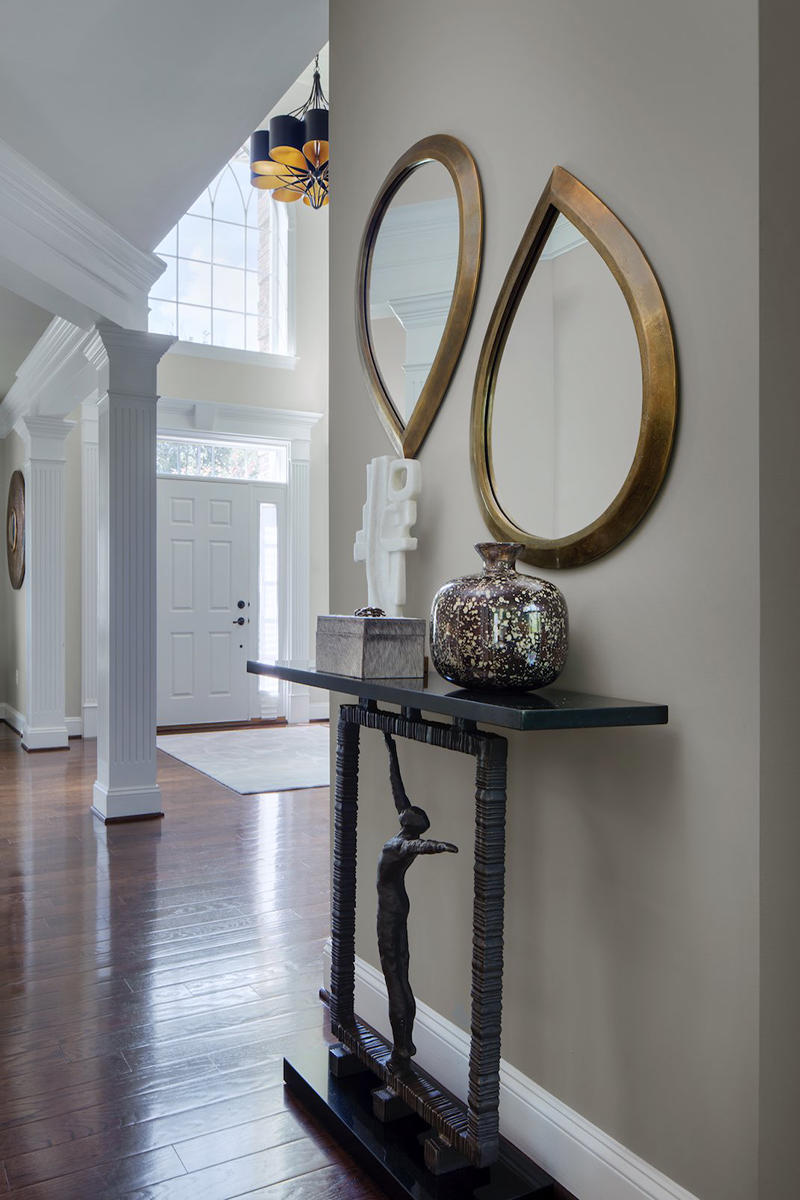
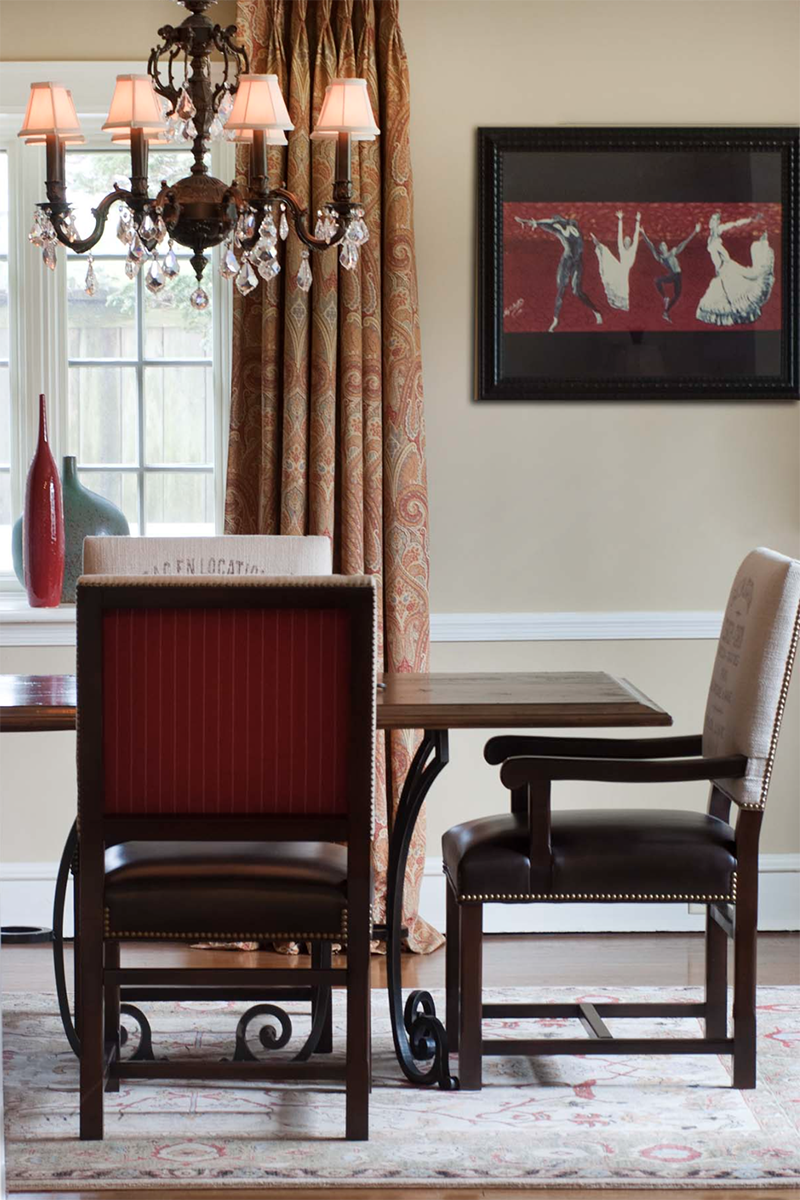
You mentioned that house in Texas, but are most of your projects local to you?
They started out that way. Delaware is interesting—it’s such a small state, but I think there are a lot of interior designers here per capita, so part of my business model was to be open to taking projects outside of Delaware.
How do you set yourself up to do that?
I love referrals and I never mind telling an existing client that that’s what I’m looking for. I’ll say, “I know you guys love me and you may not want to share, but I need you to share me,” and they seem to respond to that.
Being part of the Black Artists and Designer Guild has also been a way for my face and my work to be out there in a new way, and for people to know more about what I do as a designer who’s based in Delaware. Being in the company of these makers and creatives from around the world has also emboldened me to elevate the flow of my own cultural definitions of design into the spaces I create. I probably haven’t ever done as much marketing promotion as I should, so the media aspect of it, so it’s been a page-turner for me in the last two and a half years.
With the project in Texas, it was a referral. The client was on the west coast, but they’re relocating to Texas and building a home down there. My client wasn’t sure I would work in Texas, but they told the referral—the person they were referring me to—that I did. And we said, “We hope that was the right answer!” When I met the couple, things clicked. So now I’m working in Texas!
Are you on the road a lot for that project, or how much of that are you able to do remotely?
When the clients came to me, the house was still on paper. I’ve been working on the project since last March, and so far I’ve only had to make three trips to Texas—about once a quarter. I’ll be making a trip in March, and probably another in May or June. My frequency will probably ramp up a bit the closer we get to the end of the project. Right now, their end-game for being in the house is late November—although I know for sure their Sub-Zero refrigerator won’t be there by then.
All of the delays—moments like that where it’s out of your control but you have to deliver bad news to your clients—how do you navigate those tough conversations?
By fall 2020, I realized things were not getting better, so I incorporated that conversation into my conversations with prospective clients. I say, “At this point, I can only promise you that we’re working as hard as we can on your project, but I can’t promise you anything else.” As we have gotten notifications from different vendors in the industry, I’ve been very transparent with my clients in letting them know—whether it’s the material shortages or the labor shortages or the foam shortage. It’s just been one thing after another, and the only trick I have, if you want to call it a trick, is to just to keep my clients informed.
As part of my prospective client questionnaire online, I ask when they want to have their project start and when they’d like it to end. Now, for me, that question is about managing client expectations—there are always those people who call in October and want to be ready for Christmas. That was my reason for having that in there. But it also gives me a jumping-off point in the initial telephone interview with the client. I’ll say, “I noticed that you wanted your project to commence in May and that you wanted it to end on July 31st, and I just want to let you know that in the current environment, that timeline is not realistic.” And it’s funny—most people say, “It wouldn’t let me complete the form unless I put a date in there, so I just put a date in there.” That is the response probably 90 percent of the time. It’s a nice little ice breaker, and then it gives me the opportunity to give them a little bit more background on what’s going on in the industry and why there is no such thing as a timeline.
How do clients react?
A lot of what I do involves custom upholstery and when you’re getting custom work done, it takes time. I tell them, “I don’t want to take away from the process by forcing you to make a rapid decision, because you need to be comfortable with your buying decision. You need to be comfortable in giving that final approval to that fabric for that sofa that you’re going to be sitting on for the next five years.”
Have the supply chain challenges changed the way you shop?
A little bit, in that I am working on those upholstery decisions or those products that I know have a longer lead time at the start. For instance, for the project in Texas, we put together a design plan at the beginning of fourth quarter last year and I said, “We have to order your appliances by the end of January.” All of the washer and dryers, the ovens—this house has two kitchens in it—and the microwaves for the game room, the theater room, and the entertainment area. I was adamant about ordering all of it at once, and by the end of the month. I sent the entire appliance spreadsheet and said, “I really need you guys to take a look at these product links. We’ve talked about the functionality, but I need you to be sure, because we have got to order product by the end of January—otherwise there’s no way you’re going to have appliances to move into your house.” And of course, within that two- to three- month timeframe from when we first started talking about appliances to when we ordered, timelines got even longer. I knew that refrigerator was probably going to take nine months, which is why I gave them the January deadline. We ordered in January, and now it’s taking 11 months.
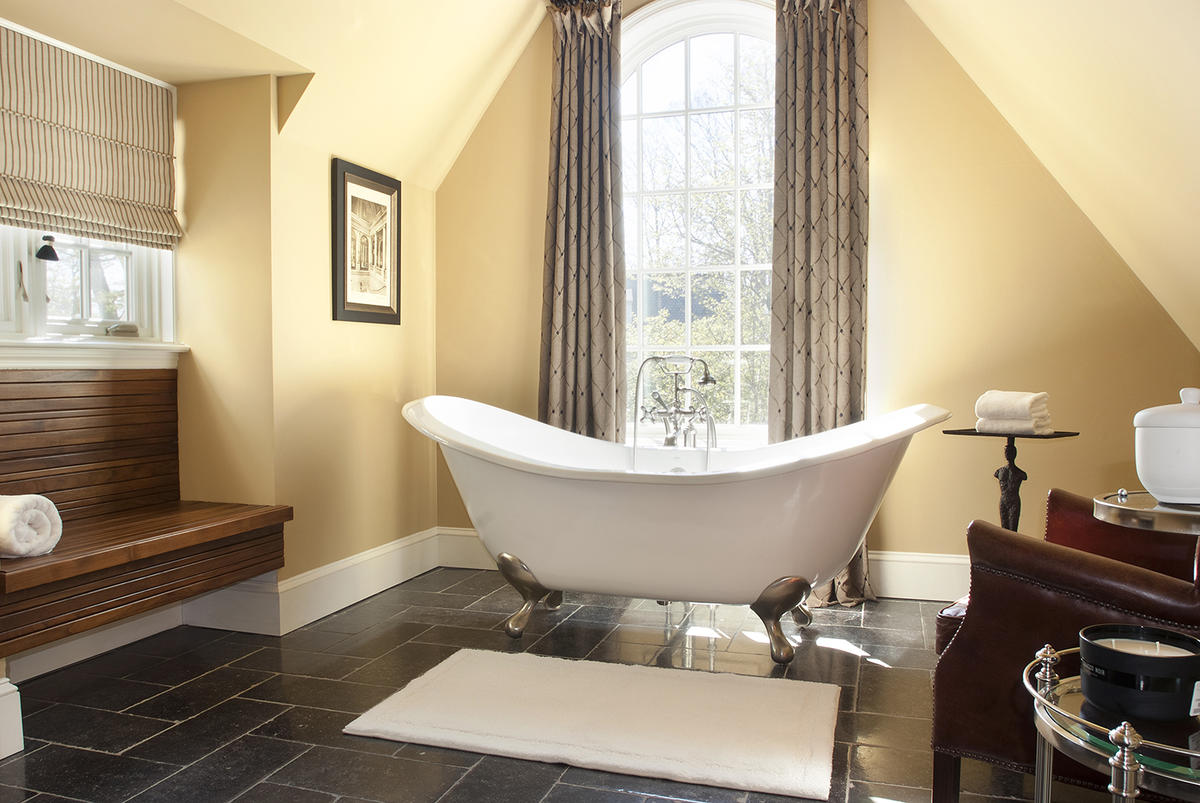
How have you approached billing for your work?
I started out as a newbie with a flat rate, but quickly realized that I wasn’t making money. I found that as long as people understand, “This is what I’m paying,” they’re going to keep asking and asking [for more]. In 2016 or 2017, I transitioned to an hourly rate. I had been toying with it before that, but I wasn’t confident that people would pay in that manner. Then I had a repeat client—I was actually working on their second home after I had charged them a flat rate to do the work in their first home—and when they got the proposal for their second home, which was twice the size of their first home, they said, “Cheryl, we’re probably going to do everything that you’ve put together in this proposal.” But they had just bought this home, and so they said,
“Would you mind charging us on an hourly basis?”
Was it just to spread out the payments?
I mean, I had my retainer in there. But instead of making a larger payment, I charged my retainer and then billed them on an hourly basis. They ended up paying me $7,000 more than had been in the original proposal because we were working on an hourly basis, but they never quibbled.
After that client experience, you switched to hourly for everybody?
Yes. What that client helped me understand was that this was my worth. Across the board, every new project that came in after that, it’s hourly. I also charge for my consultation, because that’s time away from the studio, and away from a project that somebody’s already paying me to work on.
How does your retainer work?
I take a 30 hour retainer. It’s just 30 of my hours at my hourly rate—because, as I had to explain to a client last year, that’s when we do all the heavy lifting.
And before they see any of it, too!
Right. The retainer has to go in place before we do any work. We don’t lift the pencil to draw a line ahead of that.
Have clients ever pushed back on your hours?
Everything is spelled out upfront in the contract: This is how we charge for our services; we request a non-refundable retainer, and then once the retainer is exhausted, you’ll receive a detailed monthly invoice, allocating how your hours were spent. On my invoice, the big buckets are there: design and revisions, sourcing, project management, client meetings, site visits. But it may just say “revision to bar wall design, 1.5 hours.” It’s not going to say, “We shortened this wall and…” Because do I think they really read it? No. They look at the big buckets.
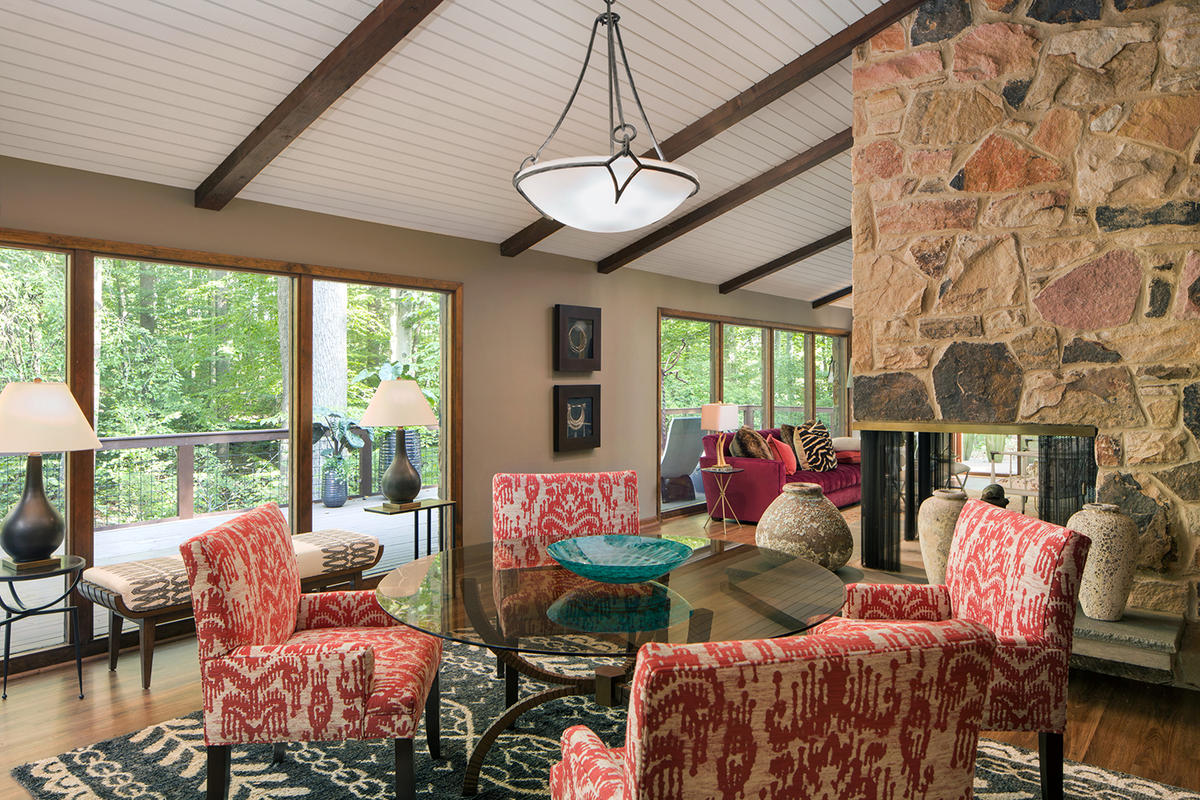
What does success look like to you?
Success means I can get into the office at 10 a.m. and leave at 5 p.m., Monday through Friday, and a one-month vacation in the summer, or whenever I want to take it.
I like that answer.
Oh my gosh, because that’s not what’s happening right now! But I think it goes back to the time between 2015 and 2017, which is when I saw my business take a turn, and I really started getting the clients I thought I wanted. At my age—because remember, I’m 62—I want to work smarter, not harder. I love multi-room or whole-house projects, and like I said, I’d like to have about four of those a year. They have to be good-sized projects, because they’ve got to sustain a staff of three to five people, and not be stressed and concerned that I may not be giving a particular client enough time because we’re just stretched.
Tell me more about that one-month vacation.
I’ve gotten better at that. I noticed that my clients seem to go on vacation when they want to. They go on vacation for two or three weeks at a time, two or three times a year. So in 2017, I let them know that I’m going to Spain for a month. And we didn’t do it in 2020 or 2021, but before that—in 2017, 2018 and 2019—we took the month of December off. After Thanksgiving, people are getting ready for the holidays, and so am I. So unless we have a delivery, or we had an install that got delayed—unless it’s something that’s already on the books before Thanksgiving—we take the month of December off.
How do your careers in science and marketing influence your thinking in the day-to-day running of your business?
I have a very unique skill set that seems totally unrelated, but has served me well in transitioning to the interior design industry. As an analytical chemist, I was a problem solver. What am I doing if I’m not problem solving in interior design? And as a marketing research specialist, I spent countless hours listening to the voice of the customer. Now, I’ll present a design board and clients are like, “Oh my gosh, Cheryl, you so get me—how do you do that?” And I want to say, “About 20 years of listening to other people talk about their issues.”
How do you envision the future of your firm?
Most of the designers that I interact with are younger than I am. They’re 30 or 40 or 50—I’m 62. So I’m actually at a different place in my life. Ideally I would love to get to just four great projects a year. Most of the people that I interact with on a regular basis have another 20 or 25 years, maybe even 30 years.
They’re out there building empires.
Right. And that is not me. I really just want to design great spaces for people to live in, and get paid to do it. I don’t want another 20 years in this business. I’ll put it like that.
To learn more about Cheryl Umbles, visit her website or find her on Instagram.




























